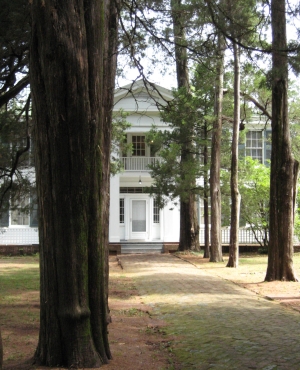
It must have been these rows of tall trees — a required feature of any Rowan Oak photo — that led me to believe Faulkner’s house was a massive and imposing structure. Maybe because I was expecting something so grand, the visit was unexpectedly intimate.
The house hasn’t changed much since the Nobel Laureate’s death in 1962 (except that it’s now climate-controlled; Faulkner was opposed to air conditioning).
The rooms are filled with his belongings and marked by his interests. An outline (for A Fable) drawn on his office wall looks simultaneously wan and manic, like one of those structural epiphanies that arrive out of the gloom at 3 a.m., keep you up until sunrise, and make no sense the next day. But I guess it actually worked for Faulkner.
The University of Mississippi’s virtual tour, which I looked through a couple of years ago, is hi-tech and all, but the rooms are bare, and overall the videos feel less like an intimate look at someone’s living space than a realtor’s-fisheye-view.
On an actual visit, you see the really important things — the Booze Trolley, Wall of Forbidding Ancestors, and sweltering bedroom where Faulkner’s wife (and unrequited adolescent love) Estelle ultimately had her revenge.
At the house, the tour was self-guided when my aunt and I visited, so we didn’t get to hear Bill Griffith’s insights and patter. The Ole Miss students manning the place were very polite but not equipped to answer questions. They did hand us a brochure, which I’ve used (along with speculation and hearsay) to supplement my Rowan Oak photo tour. Don’t miss the bust of Don Quixote.